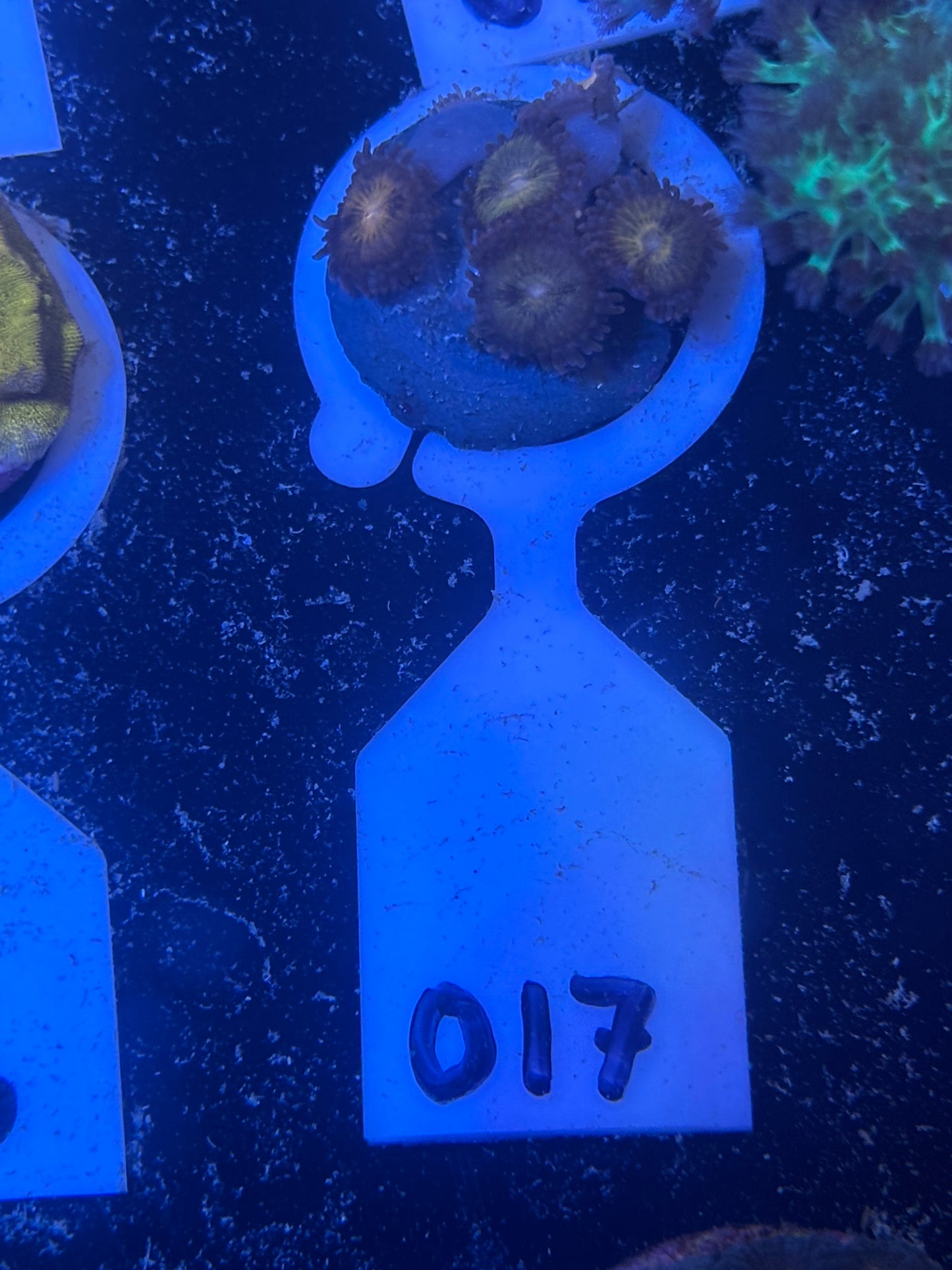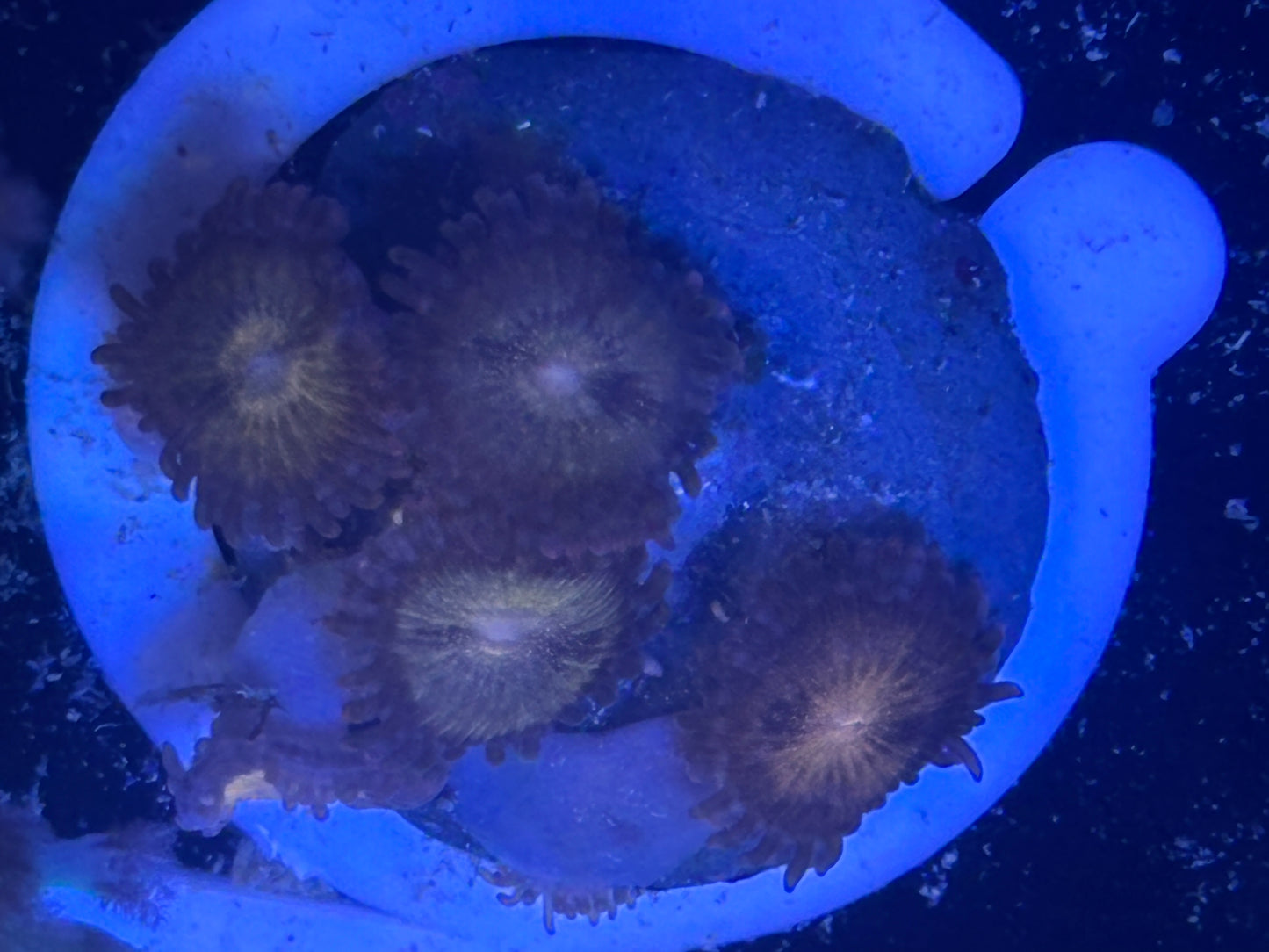First Due Aquatic Rescue
WYSWIYG Pandora Paly
WYSWIYG Pandora Paly
Couldn't load pickup availability
017 – Pandora Paly
Scientific Name: Palythoa spp.
Type: Zoanthid (Palythoa morph)
Overview
The Pandora Paly is a classic, hardy zoa/paly morph known for its rich golden skirts, green centers, and a subtle purple to bronze ring near the oral disk. This WYSIWYG frag features multiple healthy polyps with good extension and a tightly packed growth pattern. Under actinic lighting, the Pandora displays a balanced glow—luminous without overwhelming your scape.
As with most Palythoa, this coral is beginner-friendly, fast-growing, and adaptable to a variety of tank conditions. It serves as a great accent for mixed reefs or zoa gardens and helps establish fast coverage across rockwork.
Care Requirements
Lighting:
Low to moderate (PAR 50–150). Will adapt to higher light, but colors are often best under blue-heavy spectrum in shaded areas.
Water Flow:
Low to moderate. Gentle, indirect flow prevents detritus buildup and supports full polyp extension.
Placement:
Lower to mid-level rock or frag islands. Avoid placing next to aggressive LPS or corals with long sweepers.
Feeding:
Optional. Polyps may respond to fine particulate foods like reef roids or powdered coral blends, though not required for growth.
Aggression Level:
Low to moderate. Palythoa can overgrow neighboring corals if not trimmed or isolated. Consider managing with frag racks or dedicated patches.
Growth Rate:
Fast. Spreads across rock readily once established.
Difficulty:
Easy. A strong candidate for new hobbyists and well-established tanks alike.
Additional Notes
The Pandora Paly is one of the more stable and consistent zoanthid varieties in terms of color and growth. It maintains its signature tones across different lighting conditions, making it ideal for display tanks, frag swaps, and collectors’ grow-out racks.
As with all Palythoa, use caution when fragging—wear gloves and goggles due to potential palytoxin exposure. Handle gently to avoid stress, and dip thoroughly during acclimation.
Share




